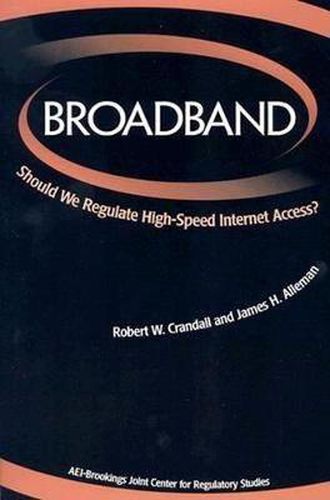Readings Newsletter
Become a Readings Member to make your shopping experience even easier.
Sign in or sign up for free!
You’re not far away from qualifying for FREE standard shipping within Australia
You’ve qualified for FREE standard shipping within Australia
The cart is loading…






There is wide-spread concern in the US telecommunications industry that public policy may be impeding the continued development of the Internet into a high-speed communications network. Broadband policy is controversial in large part because of the differences in the regulatory regimes faced by different types of carriers. Cable television companies face neither retail price regulation of their cable modem services nor any requirements to make their facilities available to competitors. Local telephone companies, on the other hand, face both retail price regulation for their DSL service and a requirement imposed by the 1996 Telecommunications Act that they unbundle their network facilities and lease them to rivals. Finally, new entrants are largely unregulated, but many rely upon the incumbent telephone companies for the last mile or loop to connect their customers to their high-speed transport services. This asymmetric regulation is the focus of this volume, in which telecommunications scholars address the public policy issues that have arisen over the deployment of new high-speed telecommunications services.
$9.00 standard shipping within Australia
FREE standard shipping within Australia for orders over $100.00
Express & International shipping calculated at checkout
There is wide-spread concern in the US telecommunications industry that public policy may be impeding the continued development of the Internet into a high-speed communications network. Broadband policy is controversial in large part because of the differences in the regulatory regimes faced by different types of carriers. Cable television companies face neither retail price regulation of their cable modem services nor any requirements to make their facilities available to competitors. Local telephone companies, on the other hand, face both retail price regulation for their DSL service and a requirement imposed by the 1996 Telecommunications Act that they unbundle their network facilities and lease them to rivals. Finally, new entrants are largely unregulated, but many rely upon the incumbent telephone companies for the last mile or loop to connect their customers to their high-speed transport services. This asymmetric regulation is the focus of this volume, in which telecommunications scholars address the public policy issues that have arisen over the deployment of new high-speed telecommunications services.